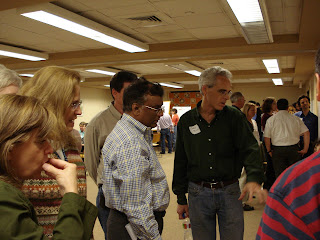Urban Forestry Summit notes from: Laura Patlove, Dave Sullivan, Jeremy Solomons, Glen Gillman, Wendy Morgan, Mary Ann Neely, Emily King
How do we show Austin’s residents that trees are good for economy and quality of life?
- Marketing campaign
- Schools
- Central information resource
All suggestions and ideas:
· Print on electric bill
o Information about ecosystem services
o Average electric usage for a house of similar size
· Identify needs and desires of residents and then provide them
· Exhibits
· Provide data and experiences
· Personalize trees with plaque stating “name”, value, age, other info
· Marketing campaign
o Include TV, YouTube, print, etc.
o Solicit corporate sponsors
o Put in terms that everyone can understand (kids)
o Specific to urban forestry
o Marketing and newspaper articles about ecosystem services
o Highlight COA activities
o Tell your neighbor
o Provide estimates for $ value that trees add to property (or offset costs of electric usage)
o Create virtual digital images of city and neighborhoods without trees
o Campaign to include how trees improve: Pedestrian environment, Air quality, Health/inspiration, Sustainability, Biodiversity, Value of property, Lower utility bills/urban heat island, Quarter quality/conservation
· Centralized accurate information resource for COA
o Funding from Climate Protection and Tree Mitigation Fund
o COA departments with tree responsibilities housed under Climate Protection
o Participants could include: PARD, WPDR, NPZD, UTCRP, LCRA, AISD
o Web based (low cost)
· Work with school districts to integrate trees into curriculum (science, geography, social, etc.)
o Include design component that helps students critically evaluate trade offs for tree planting decisions and what “right tree in right place” means
o After school hikes and walks for kids
o “Earth camp”
o Hold events in urban forest spaces
· Pilot projects by City/others to highlight benefits
o Educational signs, obvious example of beauty/function of trees
o Tree plantings and landscaping
· Arboretum = tree museum
· Edible park




